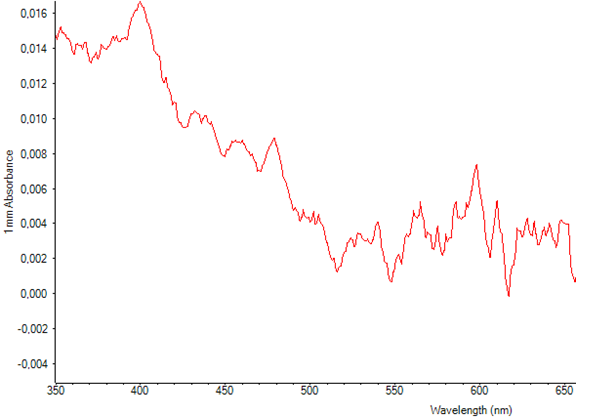Team:Uppsala/lycopene
From 2013.igem.org
Sabrijamal (Talk | contribs) |
|||
| Line 157: | Line 157: | ||
<h2>Spectrophotometry</h2> | <h2>Spectrophotometry</h2> | ||
<table> | <table> | ||
| - | <tr><td class="pic_col_results_pc"><img class="results_pic_pc" src="https://static.igem.org/mediawiki/2013/a/af/Lycopene2.png"></td><td class="fig-text"><i><b>Figure 3</b> Lycopene test from tomato, all 3 characteristic peaks are at correct wavelength and strength, we will use this as | + | <tr><td class="pic_col_results_pc"><img class="results_pic_pc" src="https://static.igem.org/mediawiki/2013/a/af/Lycopene2.png"></td><td class="fig-text"><i><b>Figure 3</b> Lycopene test from tomato, all 3 characteristic peaks are at correct wavelength and strength, we will use this as our standard for lycopene from bacteria cultures.</i> </td></tr> |
<tr><td class="pic_col_results_pc"><img class="results_pic_pc" src="https://static.igem.org/mediawiki/2013/6/60/LycopeneNC.png"></td><td class="fig-text"><i><b>Figure 4</b> Negative control in ethyl acetate.</i></td></tr> | <tr><td class="pic_col_results_pc"><img class="results_pic_pc" src="https://static.igem.org/mediawiki/2013/6/60/LycopeneNC.png"></td><td class="fig-text"><i><b>Figure 4</b> Negative control in ethyl acetate.</i></td></tr> | ||
<tr><td class="pic_col_results_pc"><img class="results_pic_pc" src="https://static.igem.org/mediawiki/2013/c/cc/Lycopene3.png"></td><td class="fig-text"><i><b>Figure 5</b> Extraction try for lycopene from bacteria culture, due to lack of time we didn´t do more than 1 try to extract it which sadly didn´t give any good result.</i> </td></tr> | <tr><td class="pic_col_results_pc"><img class="results_pic_pc" src="https://static.igem.org/mediawiki/2013/c/cc/Lycopene3.png"></td><td class="fig-text"><i><b>Figure 5</b> Extraction try for lycopene from bacteria culture, due to lack of time we didn´t do more than 1 try to extract it which sadly didn´t give any good result.</i> </td></tr> | ||
Revision as of 00:24, 5 October 2013
Lycopene

Lycopene is a carotenoid that primarily derives from the xanthophyll group. Lycopene is an antioxidant that can be found in both vegetables and fruits although it is mostly known for being responsible for the characteristic red color in tomatoes. Several studies indicate that lycopene can decrease the risk of cancer and heart diseases. [1] Because of the antioxidant capacities as well as being an important part of the carotenoid pathway makes it an interesting part to study further.

Methods
From Slovenia iGEM team 2010 we got an operon containing CrtE, CrtB, CrtI, zinc fingers and linkers were assembled with the inducible promoter pBAD/AraC. In our project the zinc fingers were not put into a lot of consideration. The precursor responsible for lycopene production is phytoene. When phytoene is present together with the enzyme phytoene synthase which is translated by CrtI which was isolated from the operon a catalytic reaction occurs. A standardize test for lycopene was put together by extraction of tomatoes. The tomatoes were boiled in ethyl-acetate to separate. DH5-alpha bacteria which should produce lycopene with the help of our plasmid were separated in a liquid-liquid separation with ethyl-acetate.

Results
A test for lycopene was put together by extraction of lycopene from tomatoes. The tomatoes were boiled in ethyl-acetate and centrifuged to separate the different compounds and in the case with the DH5-alpha bacteria cultures we also used liquid-liquid extractions. Figure 1, Freshly squeezed tomatoes purchased at our local store
Figure 1, Freshly squeezed tomatoes purchased at our local store Figure 2, Squeezed tomatoes diluted in ethyl acetetate used for further
extraction purposes
The pellet of the bacteria test showed a red pellet which would indicate the existence of lycopene. The tomato extraction test showed a red liquid which is a strong indication regarding the existence of lycopene. The tomato extraction was set as the standard and tries measuring the concentration in bacteria's producing lycopene was used. Unfortunately the concentration was too small to be detected clearly as seen below in the graphs.
Spectrophotometry
 | Figure 3 Lycopene test from tomato, all 3 characteristic peaks are at correct wavelength and strength, we will use this as our standard for lycopene from bacteria cultures. |
 | Figure 4 Negative control in ethyl acetate. |
 | Figure 5 Extraction try for lycopene from bacteria culture, due to lack of time we didn´t do more than 1 try to extract it which sadly didn´t give any good result. |
 "
"










